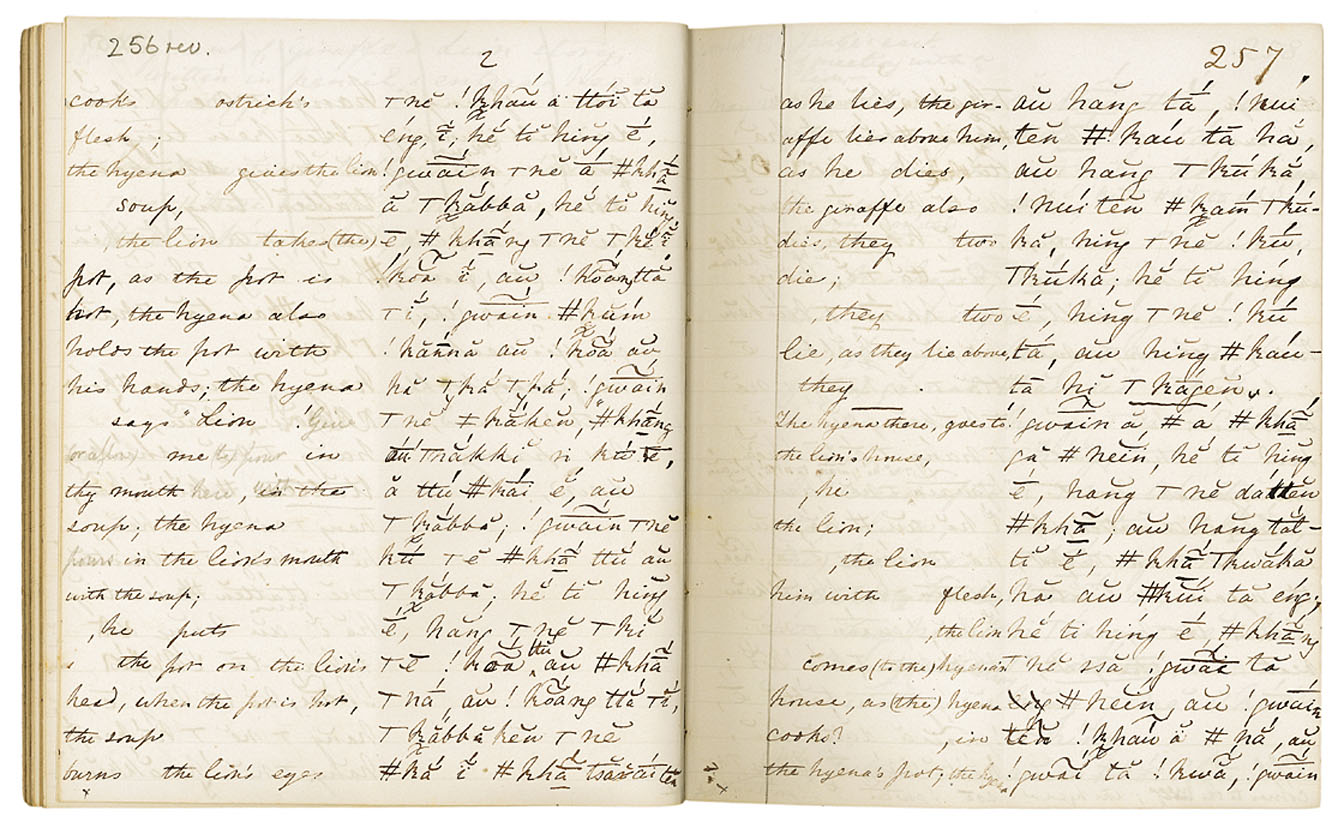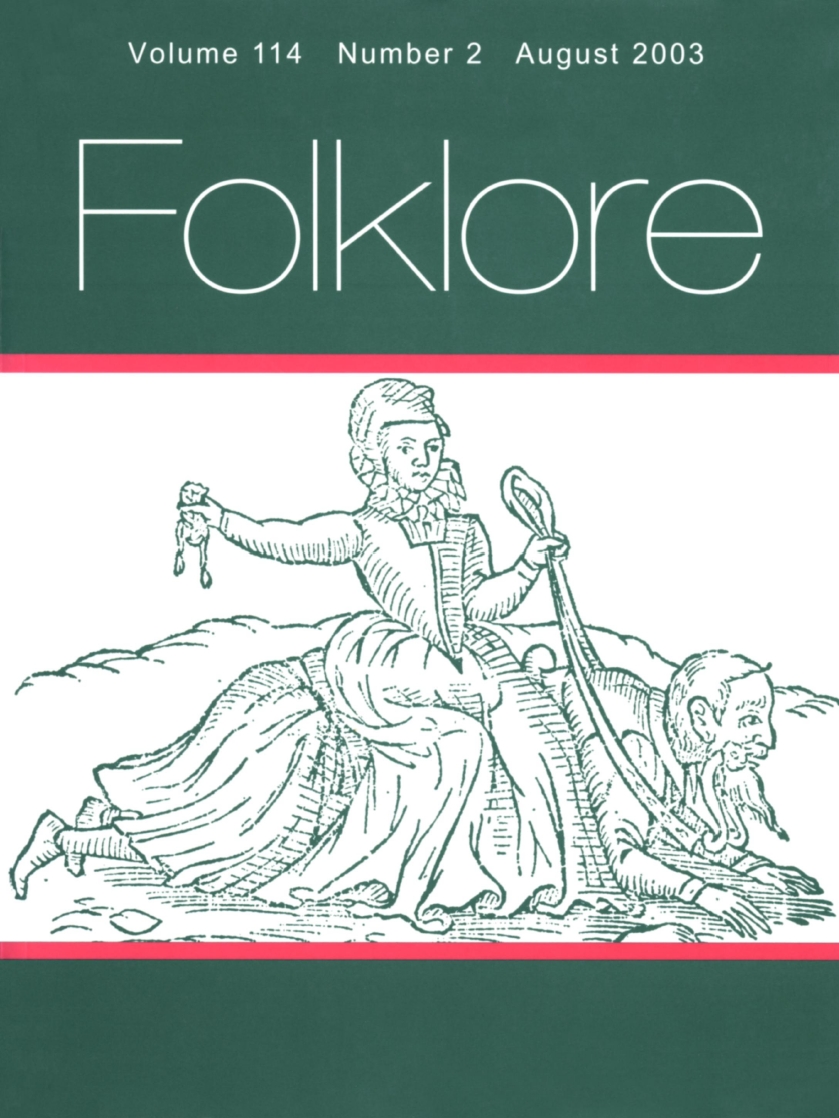|
Specimens Of Bushman Folklore
''Specimens of Bushman Folklore'' is a book by the linguist Wilhelm H. I. Bleek and Lucy C. Lloyd, which was published in 1911. The book records eighty-seven legends, myths and other traditional stories of the ǀXam Bushmen in their now-extinct language. The stories were collected through interviews with various narrators, chief among them ǀA!kunta, ǁKabbo, Diäǃkwain, !Kweiten-ta-ǀǀKen and ǀHanǂkasso. These tales were written down and translated by Bleek and his sister-in-law Lloyd. Bleek died in 1875, but Lloyd continued transcribing ǀXam narratives after his death. It is thanks to her efforts that some of the narratives were eventually published in this book, which also includes sketches of rock art attributed to the Bushmen people and some ǃXun narratives. ''Specimens of Bushman Folklore'' has been considered the cornerstone of study of the Bushmen and their religious beliefs. Laurens van der Post describes the book (and Dorothea Bleek Dorothea Frances Bl ... [...More Info...] [...Related Items...] OR: [Wikipedia] [Google] [Baidu] |
Wilhelm Bleek
Wilhelm Heinrich Immanuel Bleek (8 March 1827 – 17 August 1875) was a German linguist. His work included ''A Comparative Grammar of South African Languages'' and his great project jointly executed with Lucy Lloyd: The Bleek and Lloyd Archive of ǀxam and !kun texts. A short form of this eventually reached press with '' Specimens of Bushman Folklore'', which Laurens van der Post drew on heavily. Biography Wilhelm Heinrich Immanuel Bleek was born in Berlin on 8 March 1827. He was the eldest son of Friedrich Bleek, Professor of Theology at Berlin University and then at the University of Bonn, and Augusta Charlotte Marianne Henriette Sethe. He graduated from the University of Bonn in 1851 with a doctorate in linguistics, after a period in Berlin where he went to study Hebrew and where he first became interested in African languages. Bleek's thesis featured an attempt to link North African and Khoikhoi (or what were then called Hottentot) languages – the thinking at the time b ... [...More Info...] [...Related Items...] OR: [Wikipedia] [Google] [Baidu] |
Lucy Lloyd
Lucy Catherine Lloyd (7 November 1834 – 31 August 1914) was the creator, along with Wilhelm Bleek, of the 19th-century archive of ǀXam and !Kung texts. Early life Lucy Catherine Lloyd was born in Norbury in England on 7 November 1834. Her father, William H.C. Lloyd, Archdeacon of Durban, was the rector of Norbury and vicar of Ranton, two villages in western England in Staffordshire. He was also chaplain to the Earl of Lichfield, to whom he was related through his mother. Lucy Lloyd's mother was Lucy Anne Jeffreys, also a minister's daughter, who died in 1842 when Lucy was eight. Lucy Lloyd was the second of four daughters. Her father remarried in 1844 and had 13 additional children with his new wife. After her mother's death, Lucy and her sisters lived with their maternal uncle and his wife, Sir John and Caroline Dundas, from whom they received a private and apparently liberal education. In 1847 Robert Gray was consecrated Bishop of Cape Town. William Lloyd was sent to ... [...More Info...] [...Related Items...] OR: [Wikipedia] [Google] [Baidu] |
Linguistics
Linguistics is the scientific study of human language. It is called a scientific study because it entails a comprehensive, systematic, objective, and precise analysis of all aspects of language, particularly its nature and structure. Linguistics is concerned with both the cognitive and social aspects of language. It is considered a scientific field as well as an academic discipline; it has been classified as a social science, natural science, cognitive science,Thagard, PaulCognitive Science, The Stanford Encyclopedia of Philosophy (Fall 2008 Edition), Edward N. Zalta (ed.). or part of the humanities. Traditional areas of linguistic analysis correspond to phenomena found in human linguistic systems, such as syntax (rules governing the structure of sentences); semantics (meaning); morphology (structure of words); phonetics (speech sounds and equivalent gestures in sign languages); phonology (the abstract sound system of a particular language); and pragmatics (how soc ... [...More Info...] [...Related Items...] OR: [Wikipedia] [Google] [Baidu] |
Folklore
Folklore is shared by a particular group of people; it encompasses the traditions common to that culture, subculture or group. This includes oral traditions such as Narrative, tales, legends, proverbs and jokes. They include material culture, ranging from traditional building styles common to the group. Folklore also includes Tradition, customary lore, taking actions for folk beliefs, the forms and rituals of celebrations such as Christmas and weddings, folk dances and Rite of passage, initiation rites. Each one of these, either singly or in combination, is considered a Cultural artifact, folklore artifact or Cultural expressions, traditional cultural expression. Just as essential as the form, folklore also encompasses the transmission of these artifacts from one region to another or from one generation to the next. Folklore is not something one can typically gain in a formal school curriculum or study in the fine arts. Instead, these traditions are passed along informally from o ... [...More Info...] [...Related Items...] OR: [Wikipedia] [Google] [Baidu] |
ǀXam Language
ǀXam pronounced , in English ) is considered an extinct language of South Africa formerly spoken by the ǀXam-ka ǃʼē of South Africa. It is part of the ǃUi branch of the Tuu languages and closely related to the moribund Nǁng language. Much of the scholarly work on ǀXam was performed by Wilhelm Bleek, a German linguist of the 19th century, who studied a variety of ǀXam spoken at Achterveld, and (with Lucy Lloyd) another spoken at Strandberg and Katkop while working with ǁKábbo, Diaǃkwāin, ǀAǃkúṅta, ǃKwéite̥n ta ǁKēn, ǀHaṅǂkassʼō and other speakers. The surviving corpus of ǀXam comes from the stories told by and vocabulary recorded from these individuals in the Bleek and Lloyd Collection. Name The pipe at the beginning of the name "ǀXam" represents a dental click, like the English interjection ''tsk, tsk!'' used to express pity or shame. The denotes a voiceless velar fricative click accompaniment. Compared to other Khoisan languages, the ... [...More Info...] [...Related Items...] OR: [Wikipedia] [Google] [Baidu] |
San People
The San peoples (also Saan), or Bushmen, are members of various Khoe, Tuu, or Kxʼa-speaking indigenous hunter-gatherer cultures that are the first cultures of Southern Africa, and whose territories span Botswana, Namibia, Angola, Zambia, Zimbabwe, Lesotho and South Africa. In 2017, Botswana was home to approximately 63,500 San people (roughly 2.8% of the population) making it the country with the highest number of San people. Definition The term "San" has a long vowel and is spelled Sān (in Khoekhoegowab orthography). It is a Khoekhoe exonym with the meaning of "foragers" and was often used in a derogatory manner to describe nomadic, foraging people. Based on observation of lifestyle, this term has been applied to speakers of three distinct language families living between the Okavango River in Botswana and Etosha National Park in northwestern Namibia, extending up into southern Angola; central peoples of most of Namibia and Botswana, extending into Zambia and Z ... [...More Info...] [...Related Items...] OR: [Wikipedia] [Google] [Baidu] |
Folkloristics
Folklore studies, less often known as folkloristics, and occasionally tradition studies or folk life studies in the United Kingdom, is the branch of anthropology devoted to the study of folklore. This term, along with its synonyms, gained currency in the 1950s to distinguish the academic study of traditional culture from the folklore artifacts themselves. It became established as a field across both Europe and North America, coordinating with ''Volkskunde'' ( German), ''folkeminner'' ( Norwegian), and ''folkminnen'' (Swedish), among others. Overview The importance of folklore and folklore studies was recognized globally in 1982 in the UNESCO document "Recommendation on the Safeguarding of Traditional Culture and Folklore". UNESCO again in 2003 published a Convention for the Safeguarding of the Intangible Cultural Heritage. Parallel to these global statements, the American Folklife Preservation Act (P.L. 94-201), passed by the United States Congress in conjunction with the Bicen ... [...More Info...] [...Related Items...] OR: [Wikipedia] [Google] [Baidu] |
Rock Art
In archaeology, rock art is human-made markings placed on natural surfaces, typically vertical stone surfaces. A high proportion of surviving historic and prehistoric rock art is found in caves or partly enclosed rock shelters; this type also may be called cave art or parietal art. A global phenomenon, rock art is found in many culturally diverse regions of the world. It has been produced in many contexts throughout human history. In terms of technique, the four main groups are: * cave paintings, * petroglyphs, which are carved or scratched into the rock surface, * sculpted rock reliefs, and * geoglyphs, which are formed on the ground. The oldest known rock art dates from the Upper Palaeolithic period, having been found in Europe, Australia, Asia, and Africa. Anthropologists studying these artworks believe that they likely had magico-religious significance. The archaeological sub-discipline of rock art studies first developed in the late-19th century among Francophone scholar ... [...More Info...] [...Related Items...] OR: [Wikipedia] [Google] [Baidu] |
Laurens Van Der Post
Sir Laurens Jan van der Post, (13 December 1906 – 15 December 1996) was a South African Afrikaner writer, farmer, soldier, educator, journalist, humanitarian, philosopher, explorer and conservationist. He was noted for his interest in Jungianism and the Kalahari Bushmen, his experiences during World War II, as well as his relationships with notable figures such as the future King Charles III and British Prime Minister Margaret Thatcher. After his death, there was controversy over claims that he had exaggerated many aspects of his life, as well his sexual abuse and impregnation of a 14-year-old girl. Biography Early years and education Van der Post was born in the small town of Philippolis in the Orange River Colony, the post-Boer War British name for what had previously been the Afrikaner Orange Free State in what is today South Africa. His father, Christiaan Willem Hendrik van der Post (1856–1914), a Hollander from Leiden, had emigrated to South Africa with his paren ... [...More Info...] [...Related Items...] OR: [Wikipedia] [Google] [Baidu] |
Dorothea Bleek
Dorothea Frances Bleek (later Dorothy F. Bleek; born 26 March 1873, Mowbray, Cape Town – died 27 June 1948, Newlands, Cape Town) was a South African-born German anthropologist and philologist known for her research on the Bushmen (the San people) of southern Africa Southern Africa is the southernmost subregion of the African continent, south of the Congo and Tanzania. The physical location is the large part of Africa to the south of the extensive Congo River basin. Southern Africa is home to a number .... Life and work Dorothea Bleek was the fifth daughter of Wilhelm Bleek, a pioneering philologist studying the languages and cultures of southern Africa in the late 1800s. Much of his work was done in partnership with his sister-in-law (Dorothy Bleek's aunt, Lucy Lloyd). The work of Dorothy Bleek was largely a continuation of her father and aunt's research, but she also made numerous notable contributions of her own to the field. Her culminating work, published aft ... [...More Info...] [...Related Items...] OR: [Wikipedia] [Google] [Baidu] |




